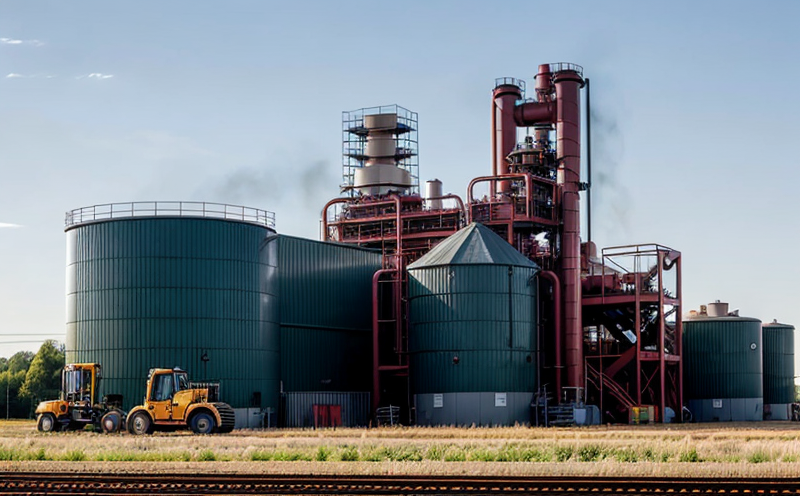ISO 13347 Industrial Fan Noise Level Testing
The ISO 13347 standard specifies a method for determining the sound power level and noise emission of industrial fans. This service is critical for ensuring compliance with international standards, optimizing performance, and protecting both equipment and personnel from harmful noise levels.
Industrial fans are essential components in various industries such as manufacturing, HVAC, and energy sectors. They play a crucial role in maintaining airflow and cooling systems. However, excessive noise can lead to discomfort and health issues for operators and nearby residents. Therefore, accurate measurement of fan noise is paramount. Compliance with ISO 13347 ensures that the fan's noise emission does not exceed acceptable limits set by regulatory bodies.
The testing process involves placing the fan in a controlled environment where sound pressure levels can be accurately measured using specialized equipment such as type 2 or higher sound level meters according to IEC 61672-1 and -2. The test setup includes background noise measurement, frequency weighting, and octave band analysis.
For accurate testing, the fan is mounted on a suitable stand that allows it to operate under its nominal operating conditions. This ensures that the measured noise levels are representative of real-world scenarios. Once the fan starts running, sound pressure level measurements are taken at various points around the fan. These readings form the basis for calculating the weighted sound power level.
The ISO 13347 standard provides detailed guidelines on how to conduct these tests, including the use of appropriate microphones and distance from the fan. The test duration is typically several minutes during which continuous measurements are taken to account for any variations in noise levels due to fluctuations in supply voltage or ambient conditions.
A key aspect of this service is generating a comprehensive report that includes all relevant data such as sound pressure level, frequency distribution, and weighted sound power level. This information helps stakeholders make informed decisions about whether the fan meets regulatory requirements and operational needs. Additionally, it provides valuable insights into potential areas for improvement in terms of noise reduction strategies.
The accuracy and reliability of ISO 13347 testing are ensured through rigorous quality control measures at every stage of the process. Our experienced team uses state-of-the-art equipment calibrated to international standards to guarantee precise results. Compliance with this standard not only enhances safety but also contributes positively towards achieving sustainability goals by minimizing environmental impact.
In summary, ISO 13347 Industrial Fan Noise Level Testing plays a vital role in ensuring safe and efficient operation of industrial fans while meeting stringent regulatory requirements. By leveraging this service, clients benefit from improved product quality, enhanced worker safety, reduced risk of non-compliance penalties, and increased market competitiveness.
Benefits
- Ensures compliance with ISO 13347 standards
- Reduces risks associated with excessive noise levels
- Promotes safer working environments for employees
- Aids in meeting regulatory requirements and avoiding penalties
- Enhances product quality through accurate measurement techniques
- Supports sustainability initiatives by minimizing environmental impact
- Improves overall efficiency of industrial processes
- Facilitates better decision-making regarding equipment selection and design improvements
Customer Impact and Satisfaction
Implementing ISO 13347 Industrial Fan Noise Level Testing brings numerous benefits to customers across different sectors. Quality managers appreciate the peace of mind knowing their products meet stringent international standards, which can enhance brand reputation and customer trust.
Compliance officers find this service invaluable for maintaining regulatory adherence without compromising on performance metrics. R&D engineers gain valuable insights into optimizing fan design parameters that balance noise reduction with operational efficiency.
Procurement teams benefit from having reliable data when specifying new equipment, ensuring they select suppliers who meet high-quality benchmarks. Ultimately, satisfied customers translate to increased sales and market share for businesses operating within this domain.
Use Cases and Application Examples
| Application Example | Description |
|---|---|
| Mechanical Manufacturing Plants | Ensuring compliance with noise regulations for large-scale industrial fans used in manufacturing processes. |
| HVAC Systems Installation | Evaluating fan units before installation to verify they meet specified noise levels, enhancing indoor air quality. |
| Power Plants | Monitoring noise emissions from generators and associated fans to ensure they do not exceed permissible limits. |
| Automotive Industries | Testing auxiliary fans in cars to meet sound pressure level requirements specified by automotive manufacturers. |





